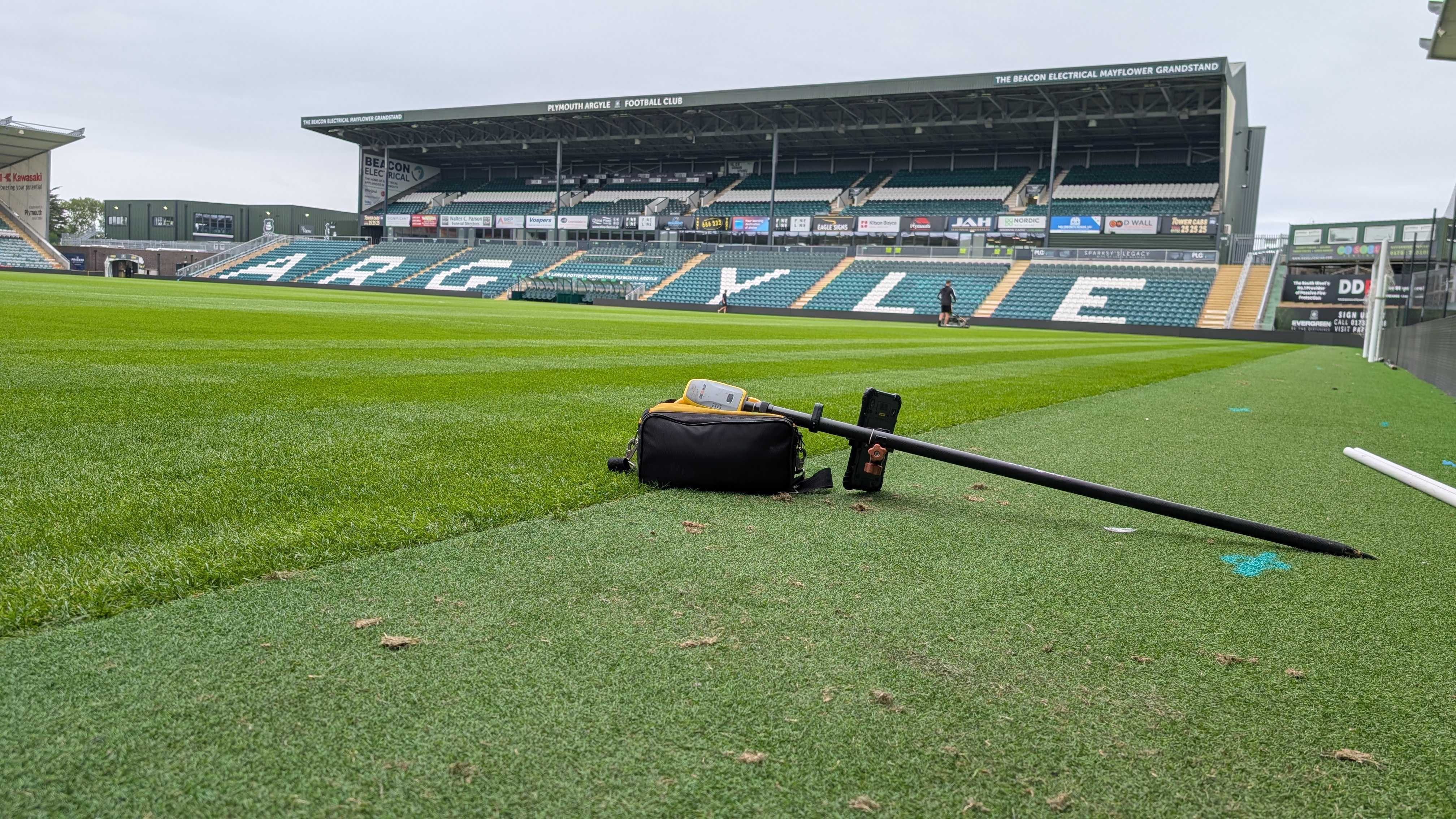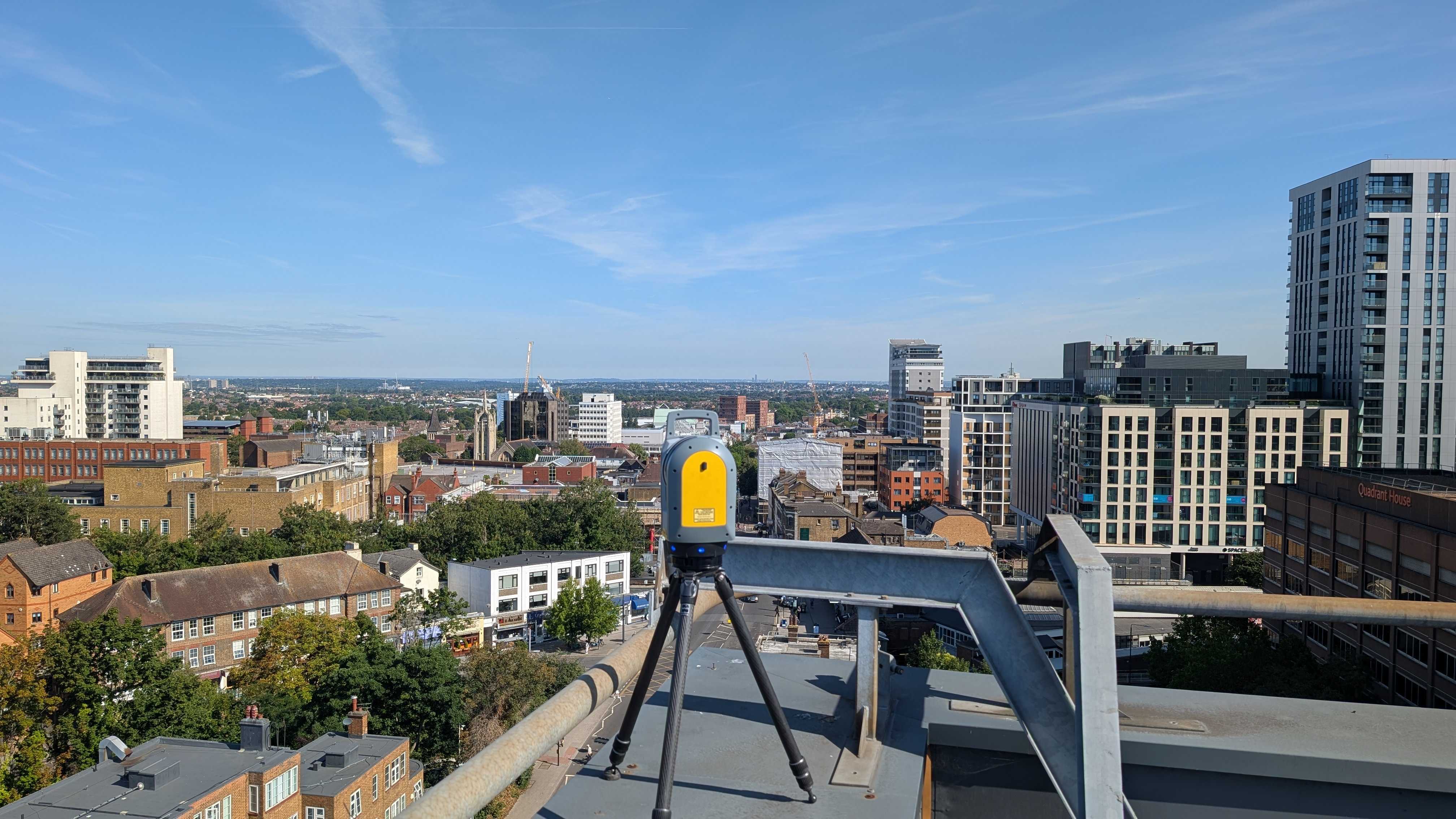Taking care of the environment and building structures that stand the test of time is crucial when working in construction.
In this blog, we'll take you on a journey to understand how GPR helps the environment without making major changes to the ground underneath us.
Before an intrusive assessment, GPR can be used to check for buried services, so that workers are aware of any risks when they’re on site.
The Significance of Environmental Assessments
Environmental assessments evaluate the potential impacts of proposed actions on the environment and suggest alternatives or mitigations that may reduce or eliminate these impacts.
Why is this necessary?
Environmental assessments help us find hidden risks like soft soil or utilities that could be a problem when construction work begins. By knowing about these risks, we can plan and build safely.
Before these assessments are completed, it’s beneficial for the team to have received the results from a GPR survey to avoid injury or surprise when undergoing the assessment.
The Dangers of Skipping Environmental Assessments
As we navigate environmental assessments and the valuable role played by Ground-Penetrating Radar (GPR), it's essential to highlight what can happen when such assessments are neglected.
Environmental Risks
Foregoing environmental assessments can result in unforeseen environmental hazards such as contamination, groundwater pollution, or damage to delicate ecosystems. These risks can have far-reaching consequences, affecting not only the environment but also human health and safety.
Legal Consequences
Many regions have strict environmental regulations that mandate thorough assessments before construction or development. Skipping these assessments can lead to legal troubles, including fines, project delays, or even the suspension of construction activities.
Cost Overruns
Environmental surprises discovered during construction due to a lack of assessments can lead to costly project delays, redesigns, and unplanned mitigation efforts. These unexpected expenses can strain project budgets and resources.
Public Perception and Reputation
Neglecting environmental assessments can lead to negative public perception and harm an organisation's reputation. Communities and stakeholders often value responsible and environmentally conscious practices.
Environmental Degradation
Ultimately, neglecting environmental assessments can contribute to long-term environmental degradation, leading to reduced habitat quality, compromised natural resources, and diminished quality of life for communities.
Understanding Ground-Penetrating Radar (GPR Surveying)
GPR operates on the principles of electromagnetic wave propagation. It employs a transmitter-receiver antenna system to transmit high-frequency electromagnetic pulses into the ground.
Ultimately, GPR equipment sends safe, non-harmful waves, into the ground. These waves travel through the soil and bounce off items they encounter below.
Remarkably, GPR accomplishes all of these tasks without the need for excavation, drilling, or soil disturbance.
Benefits of GPR Surveys for Environmental Assessments
Now that we've uncovered the intricacies of Ground-Penetrating Radar (GPR), let's explore the benefits it has when supporting environmental assessments.
Non-Invasive Nature of GPR Surveys
The cornerstone of GPR's benefits lies in its non-invasive character, where its "non-invasive" technique does not disrupt the subsurface or surrounding environment.
Safety for Construction Workers
GPR surveys substantially enhance safety protocols in construction projects. By minimising the potential for unforeseen subsurface hazards, GPR contributes significantly to the well-being of construction personnel.
Cost-Efficiency
The cost-effectiveness of GPR surveys arises from their ability to prevent unnecessary excavation, reduce resource consumption, and streamline project budgets.
Efficiency And Planning
GPR's provision of accurate subsurface data empowers efficient project planning and design, minimising construction delays and optimising resource allocation.
Environmental Impact
GPR's eco-friendliness is evident in its minimal ecological footprint and its role in regulatory compliance for environmental protection.
Conclusion
GPR technology, with its non-invasive, data-driven approach, empowers us to make informed decisions that serve not only our immediate needs but also the long-term well-being of the environment. It safeguards the safety of construction workers, preserves natural habitats, and minimises costs and construction delays – all while complying with and supporting environmental regulations.
Environmental assessments are more than just check-ups; they are an acknowledgement of our collective responsibility to protect and sustain the world we inhabit. By incorporating GPR into these assessments, we head towards a future where growth and environmental preservation coexist.
If you want to learn more about GPR surveying, get in touch with the team at Intersect Surveys to consult with a professional.
A member of the team can discuss the upcoming environmental assessment, ensuring you are benefitting from GPR surveying in the right way for you.
FAQS
1. Why is an environmental assessment essential in construction projects?
Environmental assessments are crucial as they help identify potential risks such as soft soil or buried utilities that could pose hazards during construction. They evaluate the impact of proposed actions on the environment, ensuring safe and sustainable construction practices.
2. What are the dangers of skipping environmental assessments in construction?
Skipping environmental assessments can lead to unforeseen environmental risks, legal consequences, cost overruns, negative public perception, and long-term environmental degradation. It may result in contamination, groundwater pollution, legal troubles, project delays, budget strains, and harm to an organisation's reputation.
3. How does Ground-Penetrating Radar (GPR) contribute to environmental assessments?
GPR plays a vital role by providing non-invasive surveys that help identify subsurface hazards without excavation or soil disturbance. It ensures the safety of construction workers, contributes to cost-efficiency, enables efficient project planning, and has minimal ecological impact while supporting regulatory compliance for environmental protection.
4. What are the benefits of GPR surveys in environmental assessments?
The benefits of GPR surveys include their non-invasive nature, enhancing safety for construction workers, cost-efficiency by preventing unnecessary excavation, efficiency in project planning, and minimal environmental impact. GPR supports informed decision-making, preserving natural habitats, minimizing costs, and complying with environmental regulations.
5. How does GPR technology contribute to the long-term well-being of the environment in construction projects?
GPR technology, with its non-invasive and data-driven approach, empowers informed decision-making that safeguards the safety of construction workers, preserves natural habitats, minimises costs and construction delays, and complies with environmental regulations. It ensures a future where growth and environmental preservation coexist in construction practices.







